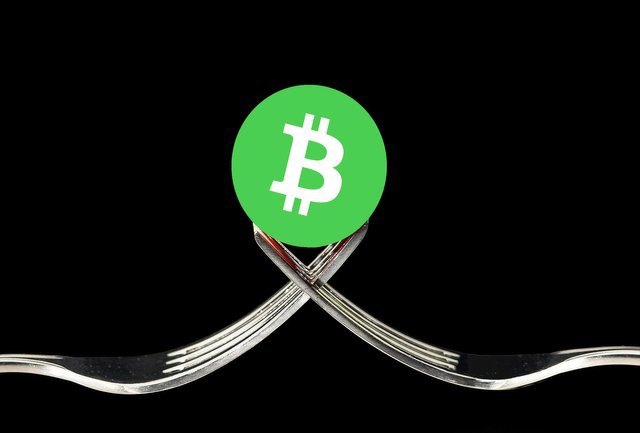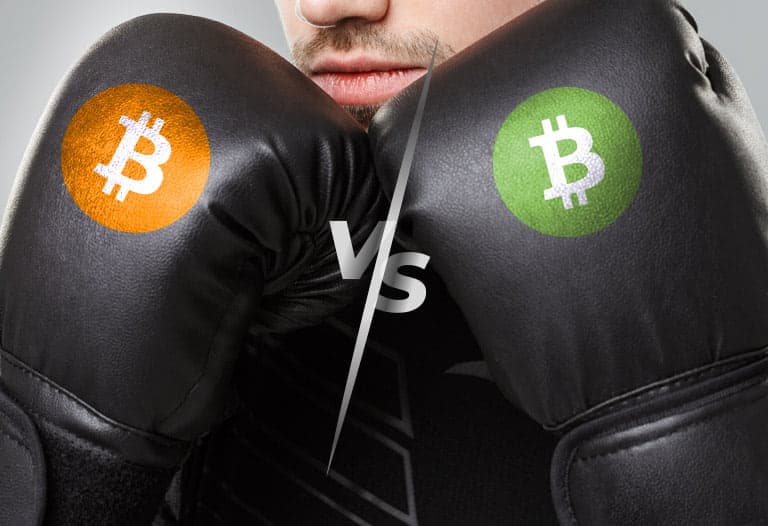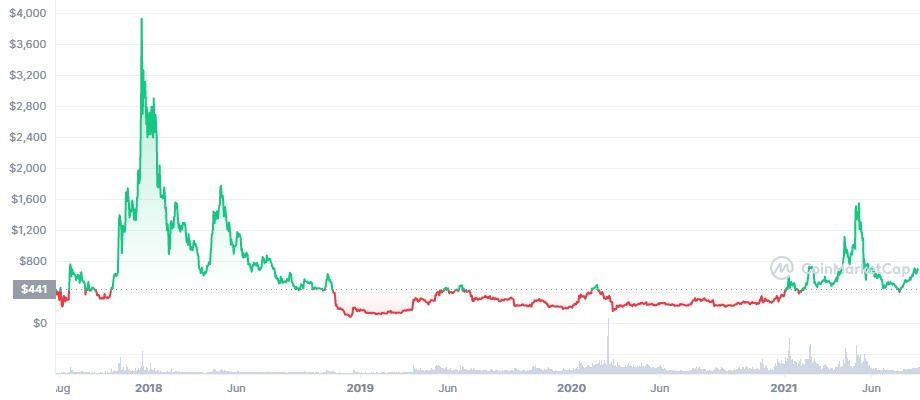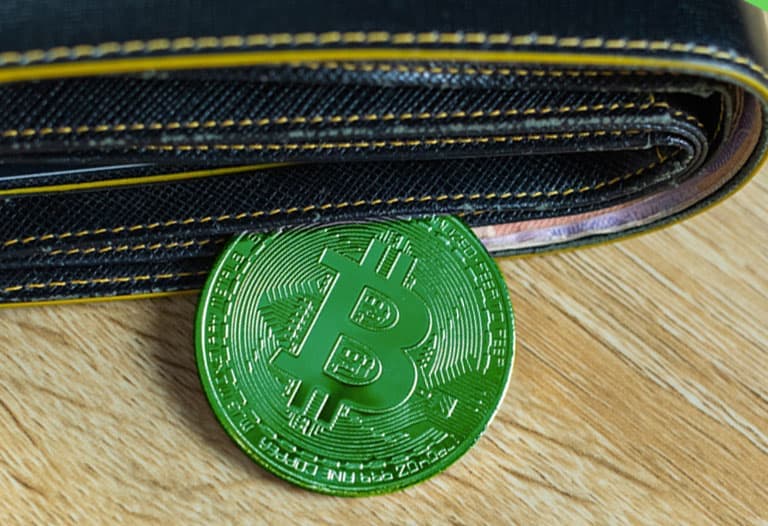What Is Bitcoin Cash Digital Currency; Everything We Need To Know About Bitcoin Cache (BCH)
Bitcoin Cash (Bcash) Is A Peer-To-Peer Electronic Cash System That Wants To Become A Global And Reliable Currency By Offering Features Such As Fast Payment, Very Low Transaction Costs, Privacy, And High Transaction Capacity.
Bitcoin Cash Is A Digital Currency That Creating In August 2017 (August 10, 2017) With Bitcoin Fork, Its Cryptocurrency Is Known As BCH.
This digital currency creates to solve the problems of bitcoin, and its main focus is on the capacity of transactions.
Bitcoin Cache is cryptocurrency-free and decentralized, which, unlike traditional Fiat currency, is not dependent on monetary intermediaries such as banks and payment processors. Governments or other centralized corporations cannot control bitcoin transactions or seize or freeze individual capital. Just as physical money (such as dollar bills) is delivered directly to the individual, Bitcoin Cash payments are transferred directly from person to person.
What is Bitcoin Cash?
Bitcoin Cash is a peer-to-peer electronic cash system that offers fast payment, meager transaction costs, privacy, and high transaction capacity. This digital currency creates in August 2017 with Bitcoin Fork; The new cryptocurrency known to its fans as e-cash, to legally continue the Bitcoin project. This digital currency uses the SHA-256 algorithm, and its maximum supply is 21 million BCH.
In November 2018 (November 1397), the bitcoin cache resulted from a fork, which led to the emergence of bitcoin cache ABC and bitcoin cache SV. ABC bitcoin cache is abbreviated to bitcoin cache; Because they both use the same client.
The emergence of bitcoin cache
The average size of each block in the block China bitcoin hundred kilobytes less than the average cost per transaction was only a few cents. This made the Bitcoin blockchain vulnerable to attacks and could cripple its system.
To prevent this from happening, the size of each block in the Bitcoin China block was increased to one megabyte, and the time required to create each block was increased to 10 minutes, resulting in interruption and space between successive transactions.
This restriction added another layer of security to the bitcoin blockchain. Still, as bitcoin grew in popularity and became more aware of its potential and platform development, these measures became cumbersome. The number of transactions and the time required to confirm them increased dramatically, and many remained unapproved. With all this happening, Bitcoin is no longer an adversary to the expensive credit card processing system.
The developers offered two solutions to the problem:
- Increase the average size of each block
- Eliminate certain parts of transactions to create more space for data in the blockchain
The Bitcoin Core team, responsible for developing and maintaining the Bitcoin empowerment algorithm, rejected the proposal to increase the block size.

Roger ver is the main sponsor of Bitcoin Cash.
Roger Ver, Wu Jihan, and Haipo Yang were among the early supporters of Bitcoin, who saw the increase in blockchain size in the digital currency network as part of Nakamoto’s core view of payment services. , Increasing the size of the bitcoin block was considered a suitable solution to the bitcoin problems. Other proponents of Bitcoin, who opposed the increase, said it was dangerous to increase the size of the block to store and decentralize transactions.
Finally, amid controversy among miners and other stakeholders in the digital currency community, after a long struggle, the Bitcoin project and its community split into two branches due to concerns about the scalability of bitcoin: bitcoin and bitcoin cache.
Bitcoin and Bitcoin Cash are two separate digital currencies.
Bitcoin Cash was created in August 2017, and every bitcoin holder received the same amount of bitcoin cache. This digital currency first entered the market in digital exchanges with a significant price of $ 900. Many major exchanges, such as CoinBase and itBit, banned Bitcoin Cache and did not add it to their list of cryptocurrencies. Still, with the support of the world’s largest digital currency mining platform (Bitmain) for bitcoin cache, its availability for cryptocurrency exchanges guarantee.
Bitcoin Cache strangely a year after its inception in November 2018 (November 1397) and for the same reason that it was separated from Bitcoin, in two branches called Bitcoin Cache ABC (Adjustable Block Capsize ) And the Bitcoin Cash SV (Satoshi Vision) were split.

- Bitcoin Cache ABC uses its own Bitcoin Cache client with changes such as arranging transactions in a specific order.
- Bitcoin Cache SV is run by Craig Wright, the inventor of Bitcoin. He rejected the use of smart contracts on the bitcoin blockchain.
With the Bitcoin Cash Fork, more funds entered the ecosystem of this digital currency, and the number of tokens available to investors multiplied. Since its inception, both branches have gained significant value in digital exchanges.
The difference between bitcoin cache and bitcoin

Bitcoin is a peer-to-peer cryptocurrency created for day-to-day transactions and financial exchanges. As the popularity and value of this digital currency have grown over the years, Bitcoin has become a tool for investment; however, with the limited size of one megabyte of bitcoin blocks and the increase in transactions, scalability problems arose in its blockchain, resulting in increased transaction approval time and cost. On the other hand, Bitcoin Cache will be able to increase the number of transactions per second (TPS) by keeping transaction costs low; As a result, it eliminates the problems of late payment and high costs of the Bitcoin network.
- Block size: Unlike bitcoin, bitcoin cache is designed to be more scalable to meet the needs of the global payment system. During the Bitcoin hard fork, the size of the bitcoin cache block increased from one megabyte to eight megabytes.
- Several transactions: Bitcoin typically processes between three and seven transactions per second, But Bitcoin Cache can process up to 200 transactions per second. The average number of transactions per bitcoin block at the time of the creation of bitcoin cache was between one thousand and one thousand and five hundred, and the number of transactions per block of bitcoin cache by simulating conditions with a large number of transactions, in September 2018 (September 1397) was 25 thousand per Block arrived.
- Transaction costs: Differences in block size help reduce transaction costs, increase speed and reliability; As bitcoin cache transactions usually cost less than a penny, this amount has been between one and fifteen dollars for bitcoin transactions since 2020.
- Joining Bitcoin cache to improve Sgvyt (SegWit or Segregated Witness): Sgvyt software vendor transaction allows separation of the control (witness) from the rest of a transaction and with the size of each transaction Bitcoin reduction and efficiency block gain Gives.
Major Bitcoin Cash fans, such as Roger Wear, cite Nakamoto’s core views on payment services to increase blockchain size on the digital currency network. According to them, resizing the bitcoin block will allow it to be used for day-to-day transactions, making it competitive with multinational credit card processing organizations such as Visa; Because these organizations charge high costs for processing international transactions.
The similarity of bitcoin cache with bitcoin
Apart from the ideal differences and the size of the blocks, there are many similarities between bitcoin and bitcoin cache.
Both use the Work Witness Consensus (PoW) mechanism to extract new cryptocurrencies; They use the services of Bitmain, the world’s largest digital currency mining machine, and both have a limited number of tokens equal to 21 million tokens to offer.
Bitcoin Cache also used the Bitcoin Extraction Hardness (EDA) algorithm to start, which adjusts the extraction hardness once every 2016 (approximately once every two weeks) and forces the miners to spend more time and effort to increase the hardness. It was creating a new block.
Using these similarities, the miners switched their mining activities between bitcoin and bitcoin cache. This method was profitable for the miners but harmful for the introduction of bitcoin cache in the market. Hence, BitcoinCache modified its EDA algorithm to make it easier for miners to generate its cryptocurrencies.
The main features of Bitcoin Cache
- Usable for everyone: There is no monitoring or control over its network, and you do not need permission from anyone to use it.
- Aliased Transactions: Individuals’ identities are not tied to transactions, contributing to the widespread use of bitcoin cache without any censorship.
- Transparency: Transactions are transparent and are recorded in the Global Bureau called the China Blockchain. This general ledger is updated at regular intervals in the interconnected blocks that make up the data chain. This feature eliminates the possibility of fraud on the Chinese block.
- Distributed: The General Office (China Block) is voluntarily stored by a network of participants (nodes), which ensures the longevity of the information.
- Rule-based: The nodes follow a set of rules (a protocol) to reach an agreement, according to which the real owner of each person is determined. On the other hand, each protocol (with the consensus of a large number of nodes) and the request of the participants is scalable. In this case, with the social contracts formed by the participants, the bitcoin cache can be considered a quasi-political system.
- Immutable: The technology used in the blockchain bitcoin cache is such that transactions will not change once registered in the blockchain.
- High Security: The consensus mechanism used in the Bitcoin blockchain is the Bitcoin Cache Working Algorithm (PoW) and the miners’ competition in the China blockchain over adding a new block to the chain. The cost of hardware and energy consumption for the mine in the proof-of-work algorithm helps maintain network security and adherence to game theory principles; Because attacking the network will be very expensive, and the attacker will not benefit directly.
- Fixed supply: Only 21 million bitcoin cache tokens will eventually be generated, which will make it a tangible asset such as land or gold, resulting in profitable long-term storage of this digital currency.
- Low costs: Bitcoin Cache enables credibility, speed, and cost-effectiveness for any transaction, regardless of where it takes place (including cross-border transactions), and will therefore be a viable alternative to payment networks such as Visa or Mastercard.
Why is Bitcoin Cache unique?
The main features of Bitcoin Cache make it a good investment for long-term storage and an effective tool for exchange. Philosophically, these two cases, along with the decentralized and open nature of its protocol, have made bitcoin cache a way to support and promote global economic freedom.
Save long-term value
The total supply of bitcoin cache will never be more than 21 million tokens. This is written in the code that defines the bitcoin cache protocol. As a decentralized network, users determine how the protocol evolves; Since the participants’ assets will reduce by changing the protocol, this supply limit (21 million tokens) will surely remain forever.
The rate at which new tokens are added to the rotation cycle is gradually reduced in specific programs in the code. This rate is halved almost every four years (Hawing), and therefore bitcoin cache will remain an inflatable asset.
The third bitcoin cache hawing took place in April 2020, and its token release rate decreased from 12.5 bitcoin cache per block to 6.25 bitcoin cache. In the fourth Hawking of Bitcoin Cash, which will take place in 2024 (1403), this figure will decrease to 3.125, and finally, in the last Hawing in 2136 (1515), the bitcoin token release rate per block will reach 0.00000168 bitcoin cache (BCH).
With a definite and unchangeable number of Bitcoin Cash Token supply, this digital currency is a tangible and unique asset like gold, the value of which is a function of supply and demand.
An effective means of exchange
Bitcoin Cash is just like cash, but in the digital realm, it enables peer-to-peer payments. The meager costs of transactions and settlements, regardless of the physical location of individuals, make this digital currency useful not only for remittances and cross-border transactions but also for daily transactions and even food purchases.
economic freedom
Economic freedom is the ability of individuals to freely access and uses personal resources in any way they wish, either independently or in collaboration with others. This is a vital component of human dignity and fundamental human rights. Money as a means of storing and exchanging value is the main tool for creating this freedom. With its support for economic freedom, Bitcoin Cash could be an alternative to Fiat money, which, unlike national currencies, is resistant to foreclosure, censorship, and devaluation due to unlimited inflation.
Uses of Bitcoin Cache

Bitcoin Cash combines the scarcity of a currency like gold with the nature of cash consumption. With a limited number of 21 million bitcoin tokens, bitcoin cache is scarce and, like physical cash, easy to spend. Bitcoin Cash transactions are speedy due to their meager cost, and their payments can verify via mobile or PC.
This digital currency has many uses. In addition to peer-to-peer payments, Bitcoin Cash can pay for merchandise and services in physical and online stores. The meager cost of bitcoin cache enables a new micro-transaction economy, such as multi-cent rewards for content creators and app users.
Bitcoin Cash also reduces the cost and time of remittances and cross-border trading. Other features offered by BitcoinCash include tokens, simple, smart contracts, and private payments with tools such as CashShuffle and CashFusion.
Cashshuffle allows users to shuffle their related coin cache with other bitcoin caches and eliminate traces of transactions. This tool can use through the Electron Cash wallet for bitcoin cache transactions. This tool reinforces with a system called Cashfusion. Cashfusion eliminates the possibility of tracking transaction chains, and the user can have non-standard inputs and outputs.

Schnorr Signatures is another tool used to increase the privacy of Bitcoin Cache users. Users can turn complex transactions into standard, simple, and untraceable transactions by combining their public keys and creating a new public key or combining signatures and creating a new signature.
Bitcoin Cache Extraction

Mining is how new bitcoin cache transactions are verified, and new blocks are added to the bitcoin cache blockchain. Miners use computing power and electricity to solve complex puzzles. By doing so, they can create new blocks of transactions. If these blocks are accepted in the network, miner, or mining pool, they receive a reward in the form of a new bitcoin cache.
The mining market is competitive, and as the price of bitcoin cache increases, more miners will be motivated to increase their number of attempts per second (hash rate) to generate a new block and accept it in the bitcoin cache network. More miners increase network security by increasing and distributing hash rates and prevent network control by a particular miner.
Anyone can mine bitcoins with specialized hardware and full-node software such as BCHN and connect to the rest of the digital currency network by building a new block. GPU or CPU does not work for bitcoin cache mines; Extracting this digital currency is possible with ASIC devices and can be done independently or in groups.
Buy bitcoin cache ciphers.
Bitcoin Cash is traded in many existing digital exchanges. You can go directly to digital exchanges; You can also buy bitcoin or tetra and convert it into a bitcoin cache in these exchanges. Some of the most common exchanges that support Bitcoin Cache ciphers are:
- Binance
- HitBTC
- CoinEx
- BitForex
- Bithumb
Bitcoin Cash Wallet
There are several types of wallets available for Bitcoin Cash. Bitcoin Cash wallets are available in the form of software wallets, hardware, mobile or online applications, and you can easily store, receive and send this digital currency on your computer, mobile, or even on the Internet. The following image shows each of these types of wallets with their features:
Related article:
- The best digital currency wallet
- Ledger Nano S Hardware Wallet: Ledger’s most popular hardware wallet, where you can store private keys offline. This wallet is equipped with a screen to confirm transactions, read the destination address, and retrieve data through a 24-word retrieval phrase. Ledger Nano S can purchase from the ledger nano. ir website.
- TREZOR T hardware wallet: This wallet has a mechanism similar to the Ledger hardware wallet, is equipped with a small touch screen and can be connected to a phone and a computer. Walt Treasure T supports 1600 cryptocurrencies and can be downloaded from this link.
- Jaxx Multipurpose Wallet: Wax Jaxx has a simple and understandable user interface, in which you will be able to exchange digital currency with digital currency. This wallet is compatible with different digital currencies and operating systems, including Windows, Mac, Android, and iOS. The Jaxx wallet can download from its official website.
- Electron Cash software wallet: Wallet is software for Windows, OSX, Linux, and Android that is only used to buy and sell bitcoin cache and does not have the iOS version. The low-volume Walt electron cache is easy to install and use, and it is possible to control private keys. Get this wallet through its main website.
- Coinomi Wallet: A multi-valued wallet with support for more than 500 coins and tokens provided for mobile and desktop. Walt Quinomi can be downloaded from this link.
Price history of Bitcoin Cache ciphers

Bitcoin Cash was worth $ 360 at the time of its release and then, during its peak period in late 2017 (December 29, 2017), reached its highest price of $ 4,091, and this rapid growth has made it to global markets. Ramzarzi became prominent.
The future of bitcoin cache digital currency

Bitcoin Cash is traded in many major digital currency exchanges; The transaction costs and time is low, and it can be received directly from one person and sent to another.
The number of Bitcoin Cash pools is currently limited, and the future of this digital currency depends on these few pools. Bitcoin Cache is less well known than Bitcoin, and despite its advantages, it has fewer users than Bitcoin. Investors still do not consider this digital currency as a cryptocurrency for long-term storage and use it more for short-term investments. Its development speed on the Chinese block is limited due to the small size of its development team.
What do you think about Bitcoin Cache? Do you have experience buying this digital currency? How do you assess its future?
***











